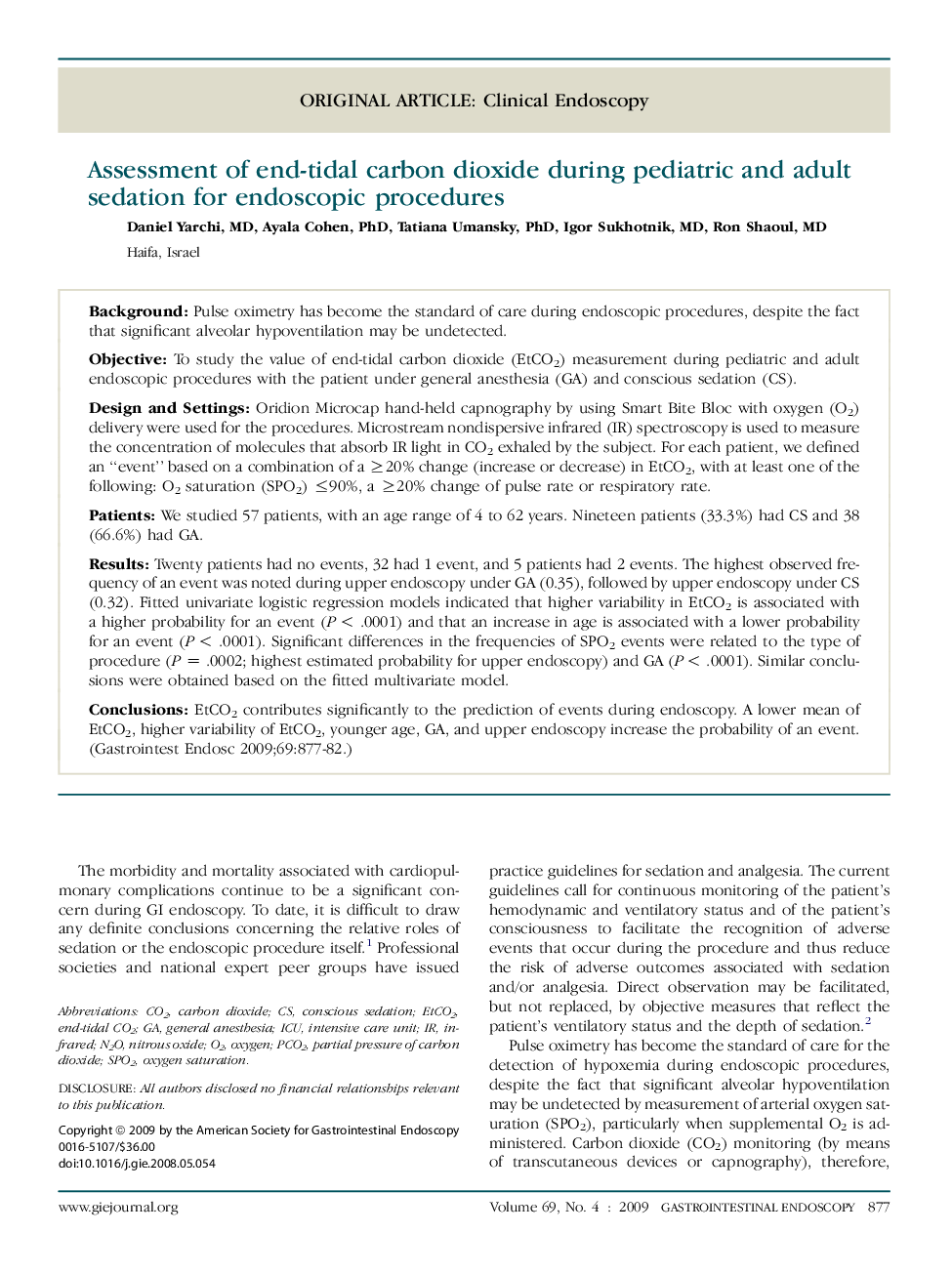| کد مقاله | کد نشریه | سال انتشار | مقاله انگلیسی | نسخه تمام متن |
|---|---|---|---|---|
| 3306525 | 1210370 | 2009 | 6 صفحه PDF | دانلود رایگان |

BackgroundPulse oximetry has become the standard of care during endoscopic procedures, despite the fact that significant alveolar hypoventilation may be undetected.ObjectiveTo study the value of end-tidal carbon dioxide (EtCO2) measurement during pediatric and adult endoscopic procedures with the patient under general anesthesia (GA) and conscious sedation (CS).Design and SettingsOridion Microcap hand-held capnography by using Smart Bite Bloc with oxygen (O2) delivery were used for the procedures. Microstream nondispersive infrared (IR) spectroscopy is used to measure the concentration of molecules that absorb IR light in CO2 exhaled by the subject. For each patient, we defined an “event” based on a combination of a ≥20% change (increase or decrease) in EtCO2, with at least one of the following: O2 saturation (SPO2) ≤90%, a ≥20% change of pulse rate or respiratory rate.PatientsWe studied 57 patients, with an age range of 4 to 62 years. Nineteen patients (33.3%) had CS and 38 (66.6%) had GA.ResultsTwenty patients had no events, 32 had 1 event, and 5 patients had 2 events. The highest observed frequency of an event was noted during upper endoscopy under GA (0.35), followed by upper endoscopy under CS (0.32). Fitted univariate logistic regression models indicated that higher variability in EtCO2 is associated with a higher probability for an event (P < .0001) and that an increase in age is associated with a lower probability for an event (P < .0001). Significant differences in the frequencies of SPO2 events were related to the type of procedure (P = .0002; highest estimated probability for upper endoscopy) and GA (P < .0001). Similar conclusions were obtained based on the fitted multivariate model.ConclusionsEtCO2 contributes significantly to the prediction of events during endoscopy. A lower mean of EtCO2, higher variability of EtCO2, younger age, GA, and upper endoscopy increase the probability of an event.
Journal: Gastrointestinal Endoscopy - Volume 69, Issue 4, April 2009, Pages 877–882